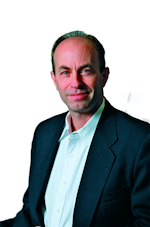Basque researchers improve real-time 3D image capture
Usurbil, Gipuzkoa, Spain--Researchers at the UPNA-Public University of Navarre in the Basque Country have developed an improved algorithm for capturing 3D images in near real time. The work, published in the journal IEEE Transactions on Pattern Analysis and Machine Intelligence, has applications in aeronautics (for example, unmanned aerial vehicles), the automotive sector, and video recording.
This research falls within the framework of the PhD thesis that Leonardo de Maeztu-Reinares, a telecommunications engineer, worked on at the Public University of Navarre. Co-authors of the paper are Rafael Cabeza-Laguna and Arantxa Villanueva-Larre, lecturers in the school's department of electrical engineering and electronics.
As are many approaches to 3D image capture, the work is based on stereoscopic vision. The authors note that comparison of two stereoscopic images requires a considerable computational load and great algorithmic complexity if accurate results are to be produced. For their research, they modified the previously-known "anisotropic diffusion" approach for comparing pairs of stereoscopic images and aggregating the results. The researchers say that their approach reaches the accuracy of "adaptive weight" iterative algorithms (in which the estimation of disparities requires much computation), but with less computational complexity. The researchers demonstrated near-real-time performance with a GPU (graphics-processing unit) implementation of the algorithm.
Can use current GPUs
“If the whole potential of current graphics processors is used,” says Leornardo de Maeztu, "it is possible to execute in real time—in other words, to process as many images per second as those caught by the corresponding camera."
Source: http://www.basqueresearch.com/berria_irakurri.asp?Berri_Kod=4218&hizk=I

John Wallace | Senior Technical Editor (1998-2022)
John Wallace was with Laser Focus World for nearly 25 years, retiring in late June 2022. He obtained a bachelor's degree in mechanical engineering and physics at Rutgers University and a master's in optical engineering at the University of Rochester. Before becoming an editor, John worked as an engineer at RCA, Exxon, Eastman Kodak, and GCA Corporation.
